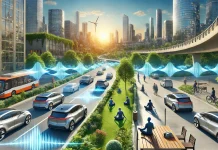The only thing that made the life of businesses and people sustain in the covid period was their adoption of digital readiness. Businesses have developed infrastructure to cope up with the digitized world by staying updated with the latest technology. Pandemic has proved to be an ultimate usher for digital transformation and accelerated various major trends that otherwise were not well adopted before covid-19. The turning point for the world has not only changed our daily lives but also impacted our economy on a larger scale.
It is a fact that things will change from what they used to be before the pandemic. While the pandemic has suspended or minimized many work operations, it also acted as a catalyst to accelerate the development of various uprising technologies. This is especially true when it comes to automating processes, minimizing human-to-human interactions, and enhancing productivity during social distancing.
5 Tech Trends Promising Digital Transformation in 2021
1. Augmented Reality/ Virtual Reality
The pandemic increased the number of individuals deploying virtual reality headsets to explore virtual travel destinations and consume online entertainment. They are also using this technology for the sake of gaining human interactions through social VR sites.
Merchants have also been using VR platforms to hold conferences, work on projects, and train and connect with employees digitally. For instance, scientists have also been turned to virtual reality platforms to collaborate on coronavirus research for potential treatments and for molecular designs. Now that enterprises and consumers have seen the extent to which this technology can be used, chances of more virtual conferences and human collaborations have exploded.
2. Deep Learning
The pioneer of deep learning Dr. Geoffrey Hinton has recently stated that the technology will replicate all human intelligence. Deep learning has the capabilities to promise reasoning challenges and can perform mathematical functions.
The word autonomy has the first step called symbiotic autonomy. With symbiotic autonomy, mechanisms like feedback and correction are included in artificial intelligence. It is like machines and humans transfer data to each other.
With deep learning, neural networks can trade complex mathematical solutions with simpler ones, and the capability to consider an increasing number of factors and make smarter decisions with small resources makes them autonomous. With the extended number of innovations in deep technology, it is estimated that businesses in every field would invest in this technology.
3. Internet Of Things (IoT)
The Internet of things has the capacity to forecast and medicate health problems even before the patients show any symptoms. It can be accomplished by using efficient medication containers, an IP for each and every body part for the doctor to hack, and smart forks that highlight if the food is appropriate for you or not. In 2019, there will be a total of 26 billion IoT which is estimated to increase to 75.44 billion in 2025.
4. 5G Networks
5G is considered as the cutting edge for the whole smartphone business. Employment of 5G networks will rise between 2020 and 2030. It will increase the possibility of zero-distance connectivity among people and connected machines. It will facilitate the consumers with velocious upload and download speeds. Five times faster 5G network will ensure stable connections.
The industry buzz circulating 5G technology has been in talks over the last year. Yet, the technology still is not in its proper functioning but it holds the capability to revolutionize the way mobile networks function. With the onset of COVID-19, 5G technology will be implemented sooner.
With the maximum number of individuals being forced to isolate themselves, the increased trend of studying and working from home has been forcing networks and demanding bandwidth. Users have now understood the requirement of speedy data sharing with accelerated connectivity speeds, the expedition in the rise of 5G technology to realize bandwidth is more than ever.
Do you know that a smartphone is touched around 2,600 times in a day? Well as much as this information is interesting, it holds even greater chances of spreading coronavirus. As the fear of coronavirus is increasing, the deployment of voice technology in the form of a voice user interface (VUI) is also increasing. That will ultimately reduce the chances of one touching different surfaces including smartphones.
Almost 80% of our daily routine conversations happen verbally, that is why using voice interfaces implemented in smartphones will have an impactful outcome. As more entertainment elements and televisions, appliances, alarm systems, light switches, and plumbing fixtures will incorporate voice control operations, there will be less need to touch them.
5. Cybersecurity
Businesses that operate on data-driven technologies are inevitable to deploy cybersecurity. Since the European Union’s General Data Protection Regulations (GDPR) have been signed, increased attention is given to privacy and data protection.
During the COVID-19 pandemic lockdown, when millions of people were working remotely, the data might become completely susceptible or at least not secured properly. This rising challenge may prove to be another reason for the implementation of cybersecurity protocols. Scammers took full advantage of the fear element of this virus to dispatch their own ransomware. There are a lot of incidents that support this fact such as fake COVID-19 documents, phishing emails providing virus protection kits, and information regarding cancelled summer Olympic games. Moreover, the healthcare industry is experiencing ransomware attacks and even faced hacking of research centres to steal data of possible vaccine of COVID-19.
Final Words
Pandemic has impacted nearly every individual and business around the globe. The eye-opening event required modern ways to sustain life when the whole world was forced to shut down. That was the time when technology saved lives and gave humans hope to approximate their normal living styles. Technology trends like 5G networks, AR/VR, and deep learning are anticipated and soon are expected to be fully implemented to ease the life of users when they are physically disconnected from the world.















